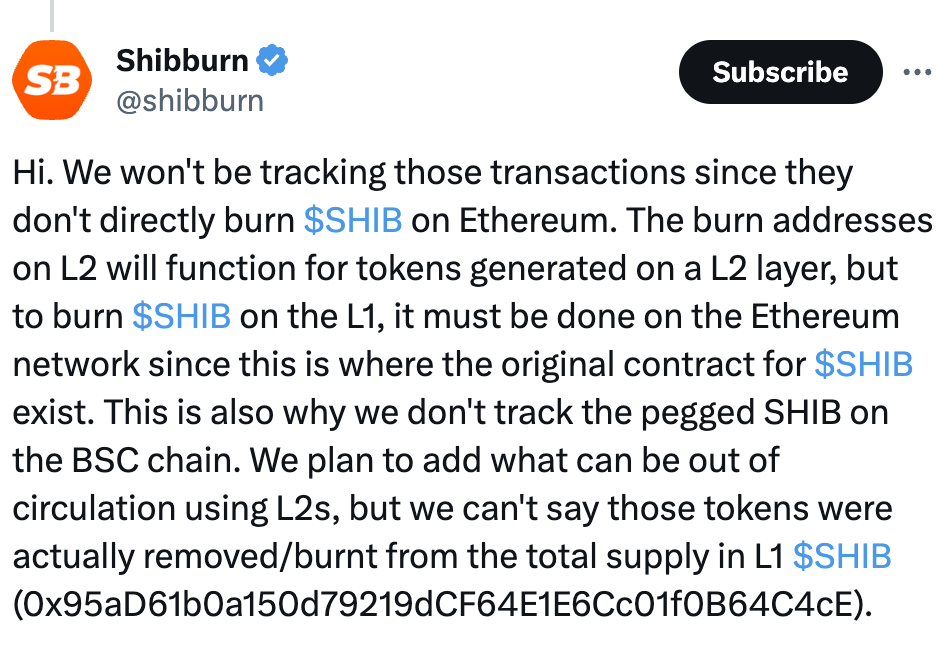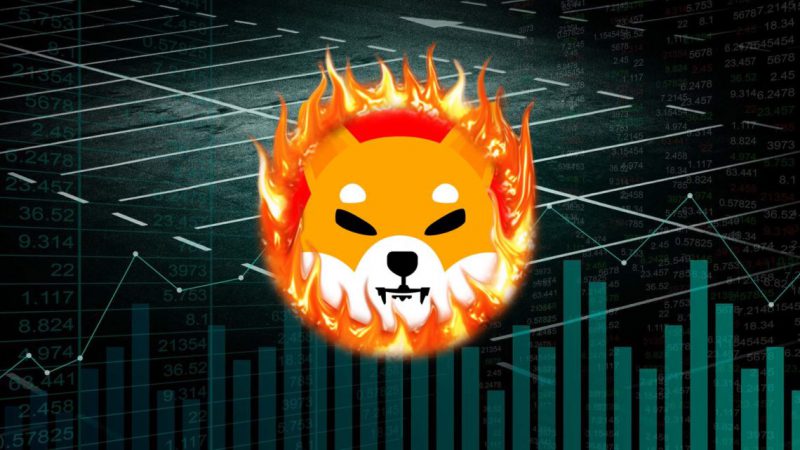Shiba Inu’s token burn process has taken an interesting turn, with Shibburn, the community-driven burn tracker. It confirms that burns occurring outside of Layer-1 will not have an impact on SHIB’s overall supply. This revelation came following the inaugural token burn on Shibarium, Shiba Inu’s Layer-2 network. This was conducted by Shib CoOp, a community-driven Metaverse real estate project. The firm went on to cause the destruction of 97 million SHIB tokens.
This event marked a significant milestone for Shibarium, prompting inquiries about how such burns would be tracked. The Shib CoOp team sought information on when Shibburn would begin monitoring burns of this nature.
Data from Shibariumscan, the dedicated blockchain explorer for Shibarium, validated the transaction, indicating that 97 million Shiba Inu tokens now reside in the burn wallet. This burn took place at precisely 12:32 [UTC] the previous day.
However, Shibburn responded to SHIB CoOp’s inquiry, underscoring the distinctive nature of this burn. It clarified that they would not track these specific transactions. The differentiation arises from the fundamental contrast between Layer-1 and Layer-2 networks. It should be noted that Ethereum served as the L1 network and Shibarium as the L2 blockchain built on top of Ethereum.
Also Read: Will Shiba Inu Hit $0.01 if 50% Of Its Supply Is Burned?
Shiba Inu: How does the burn mechanism work?
Burn addresses within a Layer-2 network are specifically designed to manage tokens generated within that particular network. Therefore, for SHIB tokens to be burned on the L1, the process must take place within the Ethereum network. This is the original birthplace of Shiba Inu’s smart contract. The Shibburn team also clarified that this distinction between L1s and L2s explains why they do not monitor burns involving pegged SHIB tokens on the Binance Smart Chain.
Shibburn emphasized that burns on L2 networks do not impact the actual supply of Shiba Inu tokens. They explicitly stated that if a transaction fails to burn SHIB on the L1, it will not affect the real SHIB supply. The team stressed that Shibarium burns should adhere to the method outlined by the Shibarium development team.


A crucial element of the Shibarium approach involves accumulating $25,000 worth of BONE in fees. This will then be converted to SHIB and burned on the Ethereum network.
Also Read: Shiba Inu: Can SHIB Rally 3X By Christmas 2023?
To further explain this scenario, when a user transfers tokens from an L1 to an L2, the L1 tokens are held within a contract. However, the L2 network creates the corresponding L2 tokens. Furthermore, if the user subsequently transfers these L2 tokens to a burning wallet, the matching L1 tokens remain within the bridge contract wallet. This leaves the circulating supply of the L1 token unaffected. What ends up in the burn wallet is the batch of L2 tokens.





